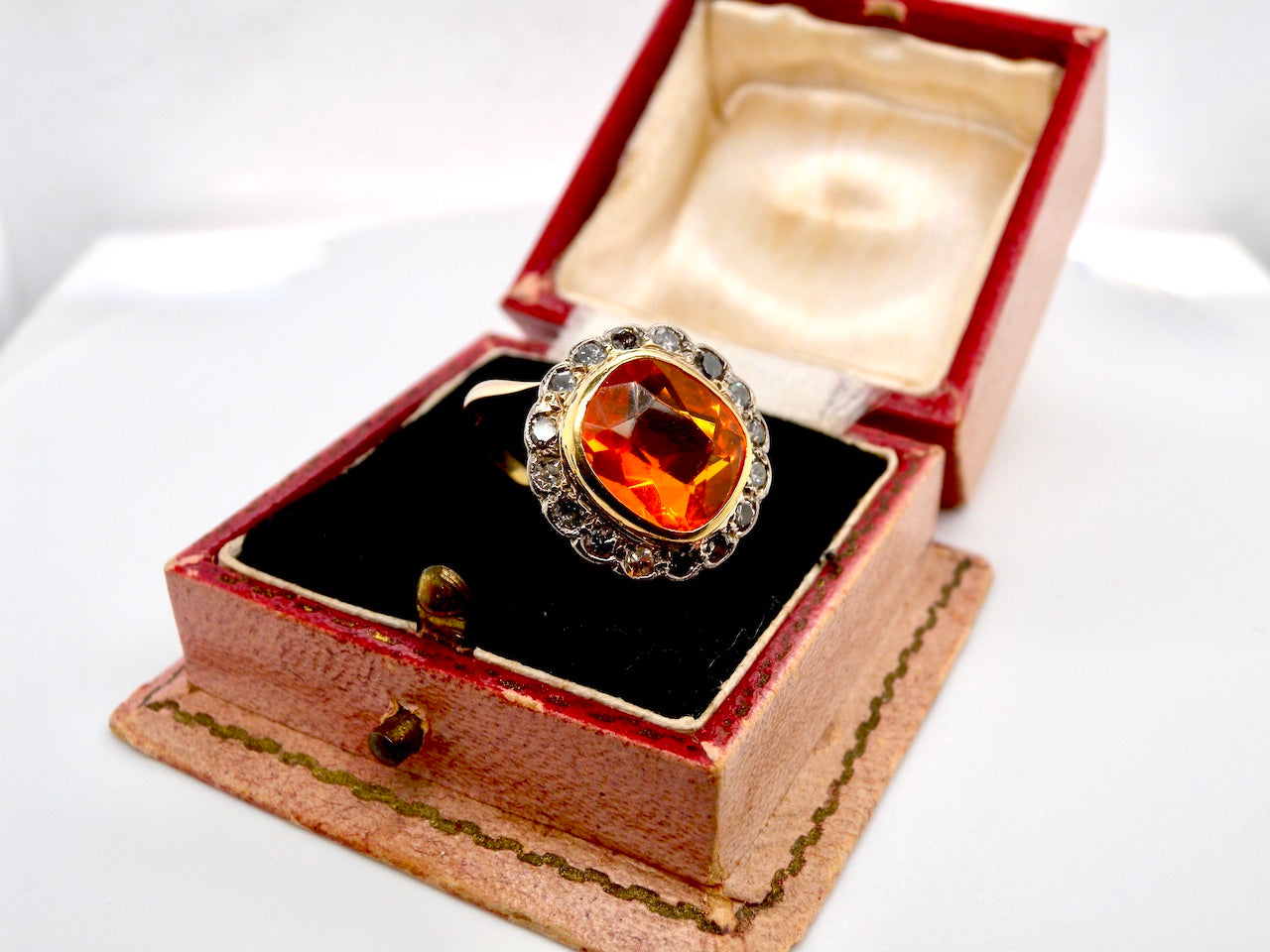When hearing the words “manmade” or “synthetic” many people imagine that the stone is fake and that it is made from plastic or glass. This has led to synthetic gems earning a suspect reputation, because of their origins.
Following is some important information about what synthetic gems are, and how they compare to natural stones.
What, exactly, are synthetic or manmade gemstones?
Even though synthetic gemstones are created in a laboratory, they have precisely the same chemical composition as natural stones. Take a genuine diamond, for instance, that is made of carbon. The only difference between this, naturally-created diamond, and one from a laboratory is that the one from a laboratory is made by using technology to compress carbon into a gemstone. Whether natural or laboratory-developed, both gemstones are still diamonds.
Although synthetically created diamonds are precisely the same as those found in nature, as far as chemical composition goes, they are still less popular than the real thing. This is probably because there are still many individuals who have negative thoughts about manmade stones, one of the main ones being, that the stones are artificial.
Jewellery lovers seem to enjoy the romance behind gems that are formed in nature, inclusions, flaws, and all! Synthetic gems just don’t have that same “feeling” as genuine ones – almost like buying a mass-produced item of clothing, instead of one that is custom-made.
Despite this negativity, however, there are several benefits to synthetic gemstones, which has resulted in them becoming increasingly popular with people who have specific buying values and habits.
Advantages of synthetic gemstones
Contrary to the belief by some people that synthetic gemstones are inferior, they have several distinct advantages, including:
- Exceptional quality – because of the way they’re created, synthetic gemstones are almost flawless, in terms of clarity and colour. It is much easier to acquire a royal blue, loupe-clean, synthetic sapphire, for instance, than having to wait for a stone of the same colour and quality, on the market.
- Extremely affordable – a large, natural, high-quality gemstone is incredibly expensive compared to one that is synthetic. The way natural stones are discovered and produced makes it extremely difficult to find one of a certain clarity, colour, and carat weight, which increases the price significantly. Synthetic stones, on the other hand, can be made to specifications, and are widely available.
- Environmentally-friendly – the natural mining process is extremely damaging to the environment, by causing water pollution, deforestation, and soil erosion. Even with regulations in place, it is difficult to monitor all mining activities, and there are some suppliers who constantly use illegal methods to acquire their stones. Since synthetic stones are created in a laboratory with a few machines and chemicals, the equipment needed, and the method to manufacture the stones, is always properly controlled.
- Morally responsible – diamonds have the bad reputation of being mined in the war-torn countries on the African continent, and being used to finance enormous conflicts, like the civil war in Sierra Leone. Even though the Kimberley Process was developed to investigate the source of gemstones and put a stop to this illegal financing, many clients choose to not play a role in an industry that lacks transparency. Synthetic diamonds, therefore, are a fantastic way to enjoy the beauty and brilliance of your diamonds, without worrying where they came from.
Disadvantages of synthetic gemstones
As wonderful as they are, synthetic gemstones do have a few disadvantages too, such as:
- Lower resale value – although they are wonderfully affordable, you won’t make much of a profit if you want to sell them at a later stage. Compared to natural gems, they are just not as valuable, for the simple reason that they are readily available.
- They’re too flawless – many people prefer natural gemstones because of their imperfections. While it is possible to create synthetic stones to appear to have flaws, the mass-market tends to lean towards stones that are clear and perfect, which to those buyers who prefer inclusions in their stones, is unappealing.
Which is more popular – synthetic or genuine gemstones?
Even though all gemstones created in a laboratory are most times, clear and flawless, it has not made them more popular than genuine gemstones. Despite the benefits of lab-created stones, most people still prefer natural gemstones, for the simple fact that natural stones are not widely available and are considered more valuable. It is this preference of popular culture that keeps the cost of certain lab-grown gemstones low, compared with genuine gemstones.
What is the cost difference between synthetic and natural gemstones?
The price of various manmade and natural gemstones differs widely and depends largely on the gemstone in question.
Are synthetic diamonds as hard as genuine diamonds?
It is a known fact that a diamond is the hardest substance on the planet! According to the Mohs Hardness Scale, natural diamonds rank 10, which means that they are exceptionally durable.
So how do synthetic diamonds compare?
Diamonds created in a laboratory, in fact, run head-to-head with genuine diamonds in durability, hardness, and strength! In other words, lab-grown diamonds might cost less, but they are just as brilliant and durable as the real thing, and are without a doubt, strong enough to hand down from one generation to the next!
Which gem is the best investment – genuine or synthetic?
Many people buy diamonds for investment purposes. However, there are two main areas where investors could lose out financially; the first is the ability to resell lab-created diamonds, and the second, where they might be led to believe by a seller, that a synthetic diamond is a genuine stone.
Considering the exquisite beauty, value, and relative rarity of real gemstones, it’s no surprise that natural stones are a better investment option. However, according to the IGS (International Gem Society), it is important to not simply assume that high-end stones make better investments. IGS states that modestly-priced gems frequently appreciate more and are also sometimes easier to sell. In addition to this, experienced investors often look for low to reasonably priced gems to buy, rather than those in the high-priced bracket.



